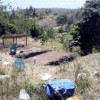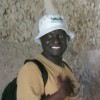Welcome to our very first research blog post written as part of the CONCH project. Over the next weeks we will be releasing blog posts written by our team members. Our authors are based in the UK, Tanzania and Europe.
We are pleased to report that the archaeological and heritage fieldwork this year has been highly successful. What follows is a short blog about the opportunities to carry out archaeological surveys in Pangani. The blog and the next explain the intentions of the archaeological team to train up local residents in archaeological watching briefs. Notes from their watching briefs will follow shortly.
Building Capacity in Archaeological Monitoring
Paul Lane (Uppsala University & University of Cambridge)
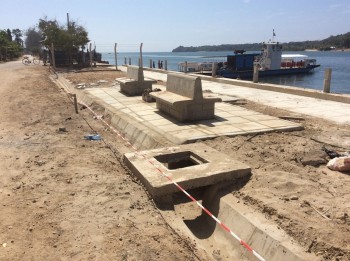
One of the key aims for the CONCH project is to help lessen the problems caused by a shortage of trained Antiquities personnel in Tanzania who could monitor any impacts upon archaeology caused by construction and development activities. Although there are increasingly more archaeological impact assessments being commissioned, and these are sometimes followed-up by rescue or salvage excavations, this generally only happens for large and externally financed projects. Smaller projects, such as house-building, local environmental improvement works and general maintenance work by councils and utilities companies, take place almost entirely unmonitored. In a historic town such as Pangani, this lack of monitoring can mean a loss of information about the location and nature of earlier buildings and other activity across the settlement.
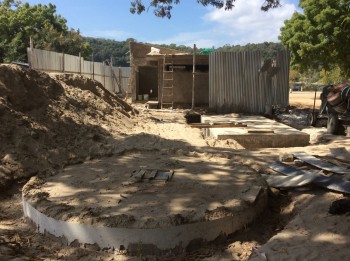
For example, when project members Paul Lane, Elinaza Mjema and Nick Pearson visited Pangani in February 2018 as part of a pre-fieldwork planning trip, they noted that a new concrete river wall had been built, with a paved walkway and benches running alongside on the shoreward side which were in the process of construction immediately upstream from the current ferry docking point.
A concrete volleyball court and a block of public toilets had also been built nearby, and a large hole had been dug for the accompanying septic tanks.
These are obviously important amenities of public benefit to Pangani’s residents. But, in the planning and installation of these, seemingly no one had thought to notify the local Antiquities officer, based 50km away in Tanga, to carry out a watching brief as trenches and holes were dug over part of the historic waterfront. When Paul, Nick and Elinaza looked in the holes that were still open, they could see sherds of pottery and traces of masonry exposed in the sections.
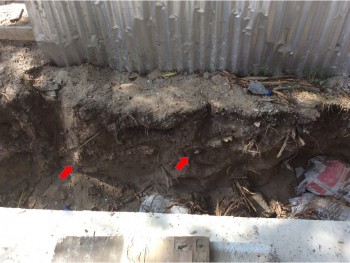
Clearly there has been settlement activity here at some time in the past, and since this is not shown on even the earliest German maps of the town, these features may date to an earlier phase. Most likely, this was during the period of Omani control, but because nothing was recorded, our theory cannot be confirmed until someone excavates here.
The need to build local capacity so as to monitor this kind of everyday modification to the historic environment became apparent on the first morning the team were in Pangani in July. On reaching the Pangarithi, Uzikwasa’s fantastic heritage centre, we immediately saw signs of construction work in the grounds of the Old Bohora Mosque directly opposite Bwanga House (which houses the heritage centre), and looking through the railings it was clear that the foundation trenches for (so we were told) a new madrassa had cut through a thick layer of archaeological material. With kind permission of the Imam and the work crew, project member Graham Bruce, Severine Kizito from Pangarithi, and our Antiquities representative Ally Mbarouk were able to do rapid recording of what had been exposed in section (see figure 4) and to collect artefacts from the spoil dumps. But how much more might have been learned had someone at Pangarithi been told about the plans for a new building in the historic heart of Pangani in advance of construction work so a proper watching brief could have been organised.

Graham and Nick, for whom this kind of work is part of their stock-in-trade and work back in the UK, therefore took the initiative to train both Severine and Ally in the fundamentals of archaeological recording and how to do an archaeological watching brief as part of the project’s capacity building goals. From now on, both of them are able to contribute to monitoring small scale construction and extraction projects that happen daily (we saw two more instances in the ten days of Phase 1 of the 2018 field season) in Pangani and elsewhere. In addition, Severine and Ally were provided with watching brief equipment to make the recording easier for them.

